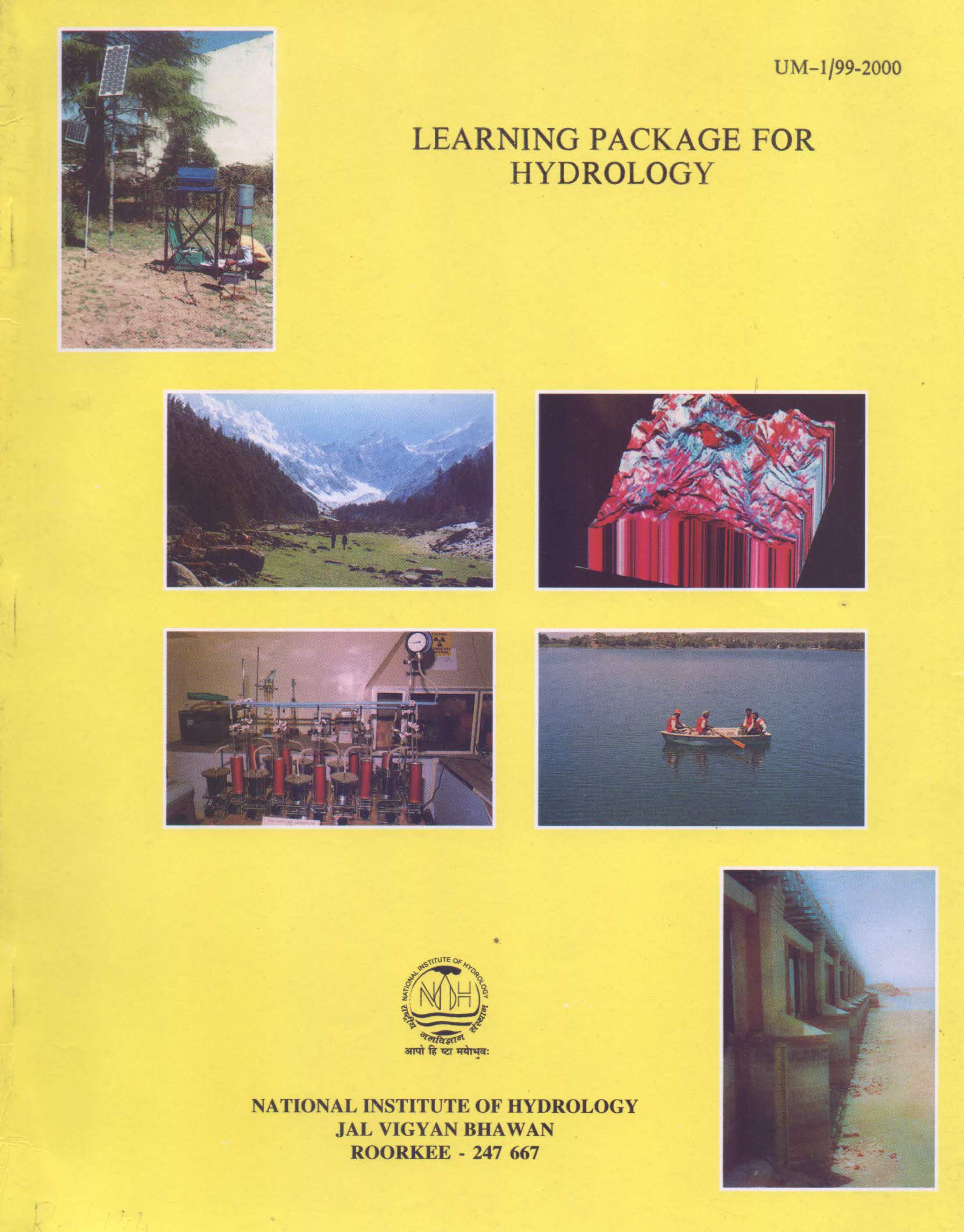- DSpace Home
- →
- Research Reports
- →
- User's Manuals
JavaScript is disabled for your browser. Some features of this site may not work without it.
User's Manuals
Browse by

Recent Submissions
-
(National Institute of Hydrology, 2011)Because of the high time and space variability of rainfall and uncertain nature of monsoon in our country, storage reservoirs form one of the most important components of a water resources development project. The principal ...
-
(National Institute of Hydrology, 2010)Water Resources management deals with technical, as well as socio-economic and ecological aspects and calls for an integrated approach and a comprehensive hydrological information system have become the key for efficient ...
-
(National Institute of Hydrology, 1999)Computers have become an integral part of everyday life. In the new millennium everybody is should be computer literate as early as possible to keep pace with the developments taking place in the field of Information ...
-
(National Institute of Hydrology, 1998)Hydrometeorological analysis forms an important and integral part of hydrological research. One of the important parameters needed for this purpose is the rainfall which itself forms a part of the hydrological cycle. ...
-
(National Institute of Hydrology, 1997)As the unit hydrographs establish a relationship between the excess rainfall and the direct runoff hydrograph, they are of immense value in the study of the hydrology of a catchment. They are of great use in (i) the ...
-
(National Institute of Hydrology, 1997)Automated data processing using high speed computers has immense potential for handling large volume of hydrologic data in a quick and economic way. In India, a large number of agencies are involved in collection ...
-
(National Institute of Hydrology, 1997)India is a vast country with high spatial and temporal variability of rainfall. In order to tap the available water resources and to utilise the water in accordance with the requirements, more than 3000 river valley ...
-
(National Institute of Hydrology, 1996)Because of the high time and space variability of rainfall and uncertain nature of monsoon in India, it is imperative to utilize the available water resources in the optimal and efficient manner. The reservoirs are one of ...
-
(National Institute of Hydrology, 1995)The seepage from a canal, which is hydraulically connected with an aquifer, is governed by the difference between the hydraulic head at the canal periphery and the hydraulic head in the aquifer in the vicinity of the ...
-
(National Institute of Hydrology, 1996)The proper planning of a project needs the proper study of hydrology. The flood problem is not only a concern of the branch of engineering but is important to a number of other branches as well. To avoid destruction, any ...
-
(National Institute of Hydrology, 1995)Unit hydrograph analysis technique is one of the most commonly used techniques for design flood estimation and real time flood forecasting. By definition, unit hydrograph is the direct surface runoff hydrograph resulted ...
-
(National Institute of Hydrology, 1995)The development of water resources of the country to meet growing demands of rising population is a challenging task. Analysis of large volume of Hydrological data collected over a considerable period of time, are required ...
-
(National Institute of Hydrology, 1994)Because of high temporal and spatial variability of rainfall in the country, it is essential to utilize the available water resources in the optimal manner. Judicious reservoir operation is an important aspect for this ...
-
(National Institute of Hydrology, 1994)The user's manual described here, provides the details of a main computer programme specifically written for establishing a suitable statistical relationship between the station values within /outside ...
-
(National Institute of Hydrology, 1994)Using Dupuit (1863) Forchheimer (1930) assumptions Donman has derived equation for drain spacing for steady state condition of discharge. The similar equation using eauivalent depth (d) in place of ...
-
(National Institute of Hydrology, 1994)Various library transaction mainly - 1) Processing- Management system, 2) Extent of databases activities for bibliographic/Non bibliographic information storage and 3) Retrieval and various services are ...
-
(National Institute of Hydrology, 1994)Planning and design requirement for a wide range of projects, such as emergency preparedness and location of nuclear power plants, have generated widespread interest in dam break floods analysis. Although much ...
-
(National Institute of Hydrology, 1993)The land surface parameterization, scheme biosphere, Atmosphere Transfer scheme(BATS) developed at National Centre for Atmospheric Research has been studied to under stand the physical processes ...
-
(National Institute of Hydrology, 1992)The report describe some basic concepts, instrumentation and techniques of atomic spectrometry. In particular, attention is given to atomic absorption and atomic emission spectrometric techniques. Alt ...
-
(National Institute of Hydrology, 1987)Processing and analysis of rainfall data constitute an important component of hydrological analysis. Thee advent of computers, new techniques of hydrological analysis and special ...